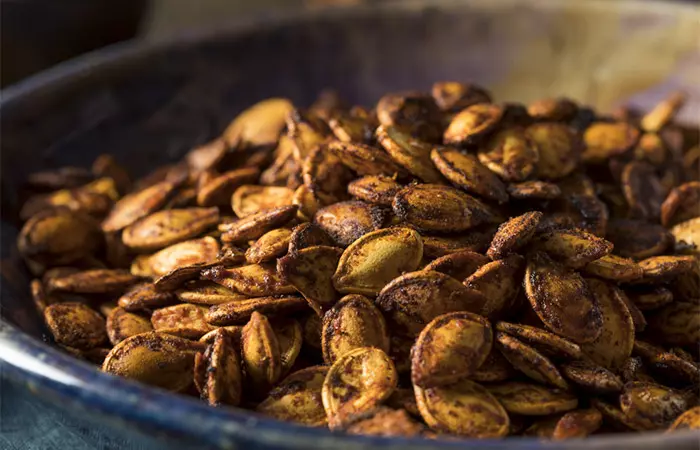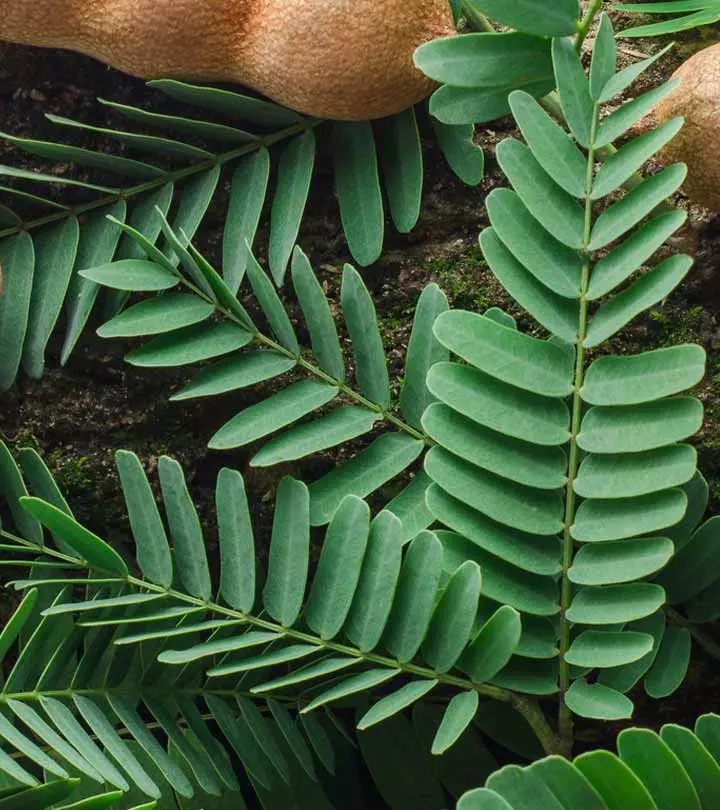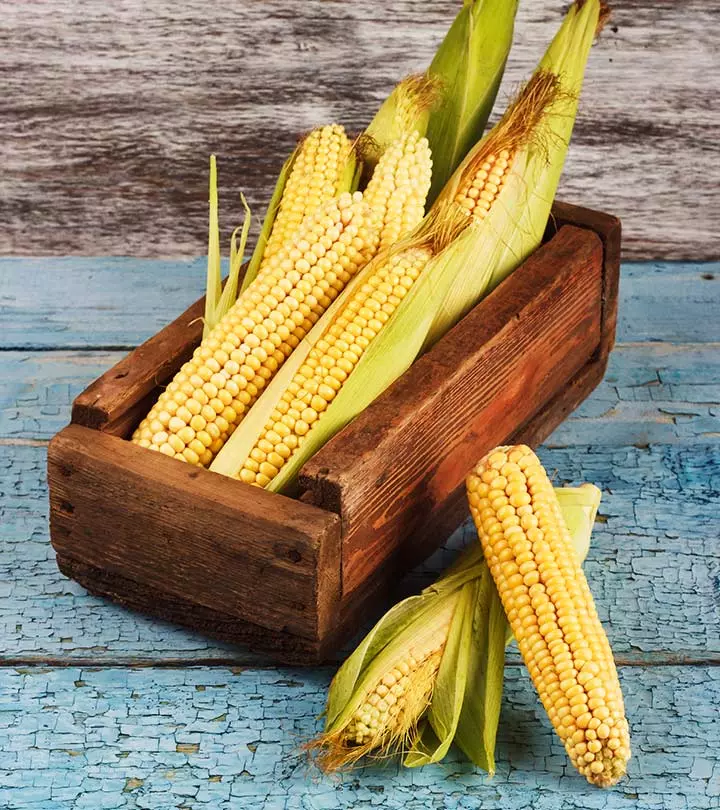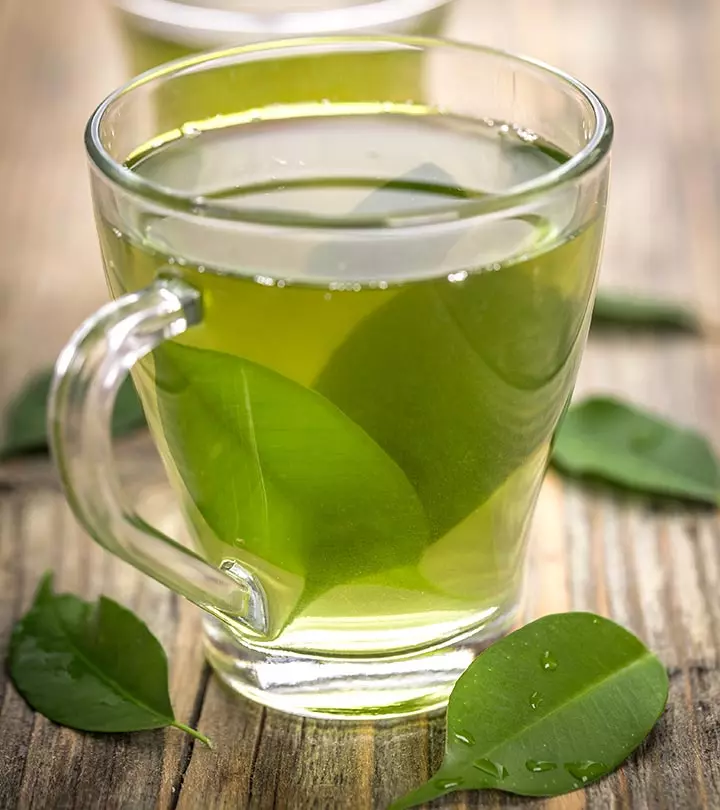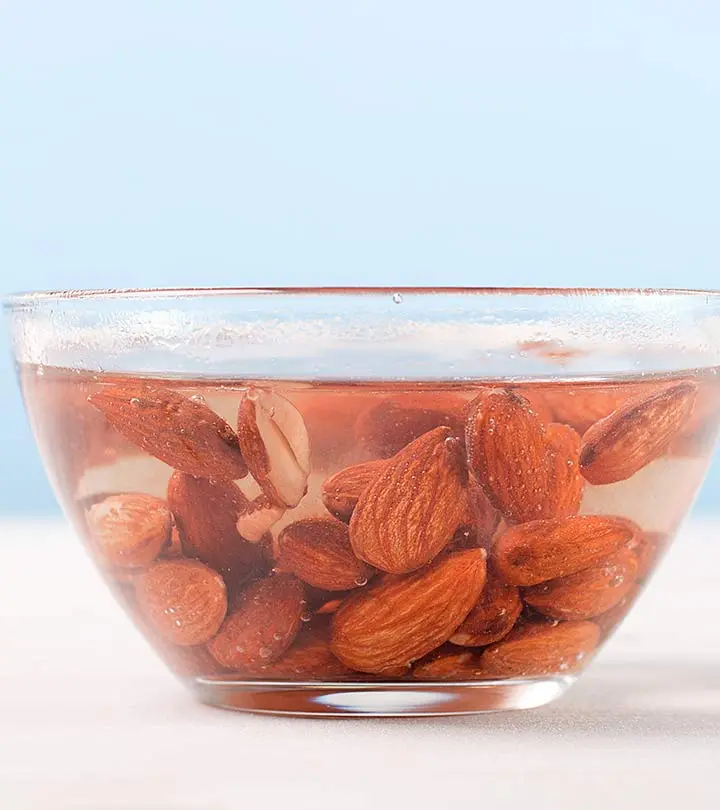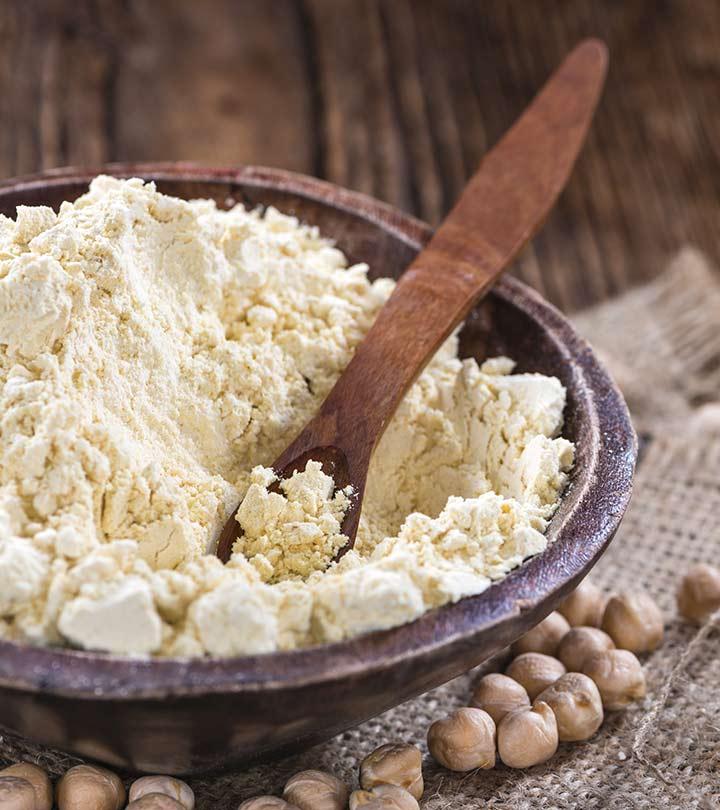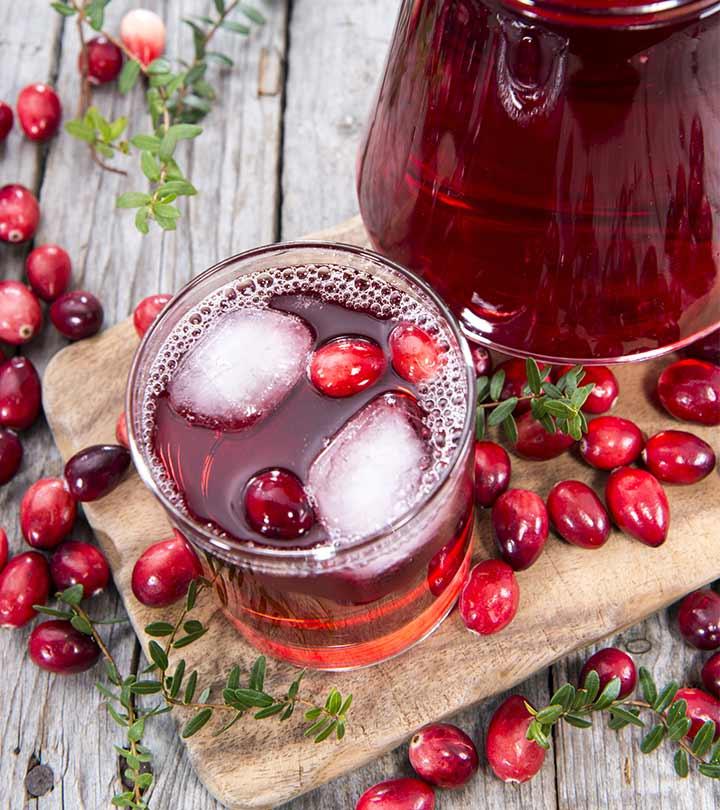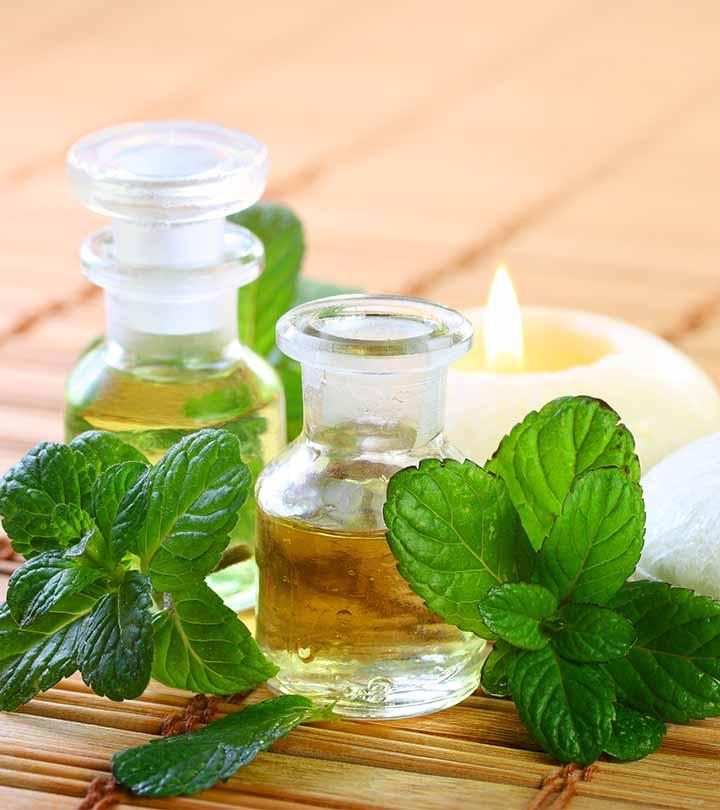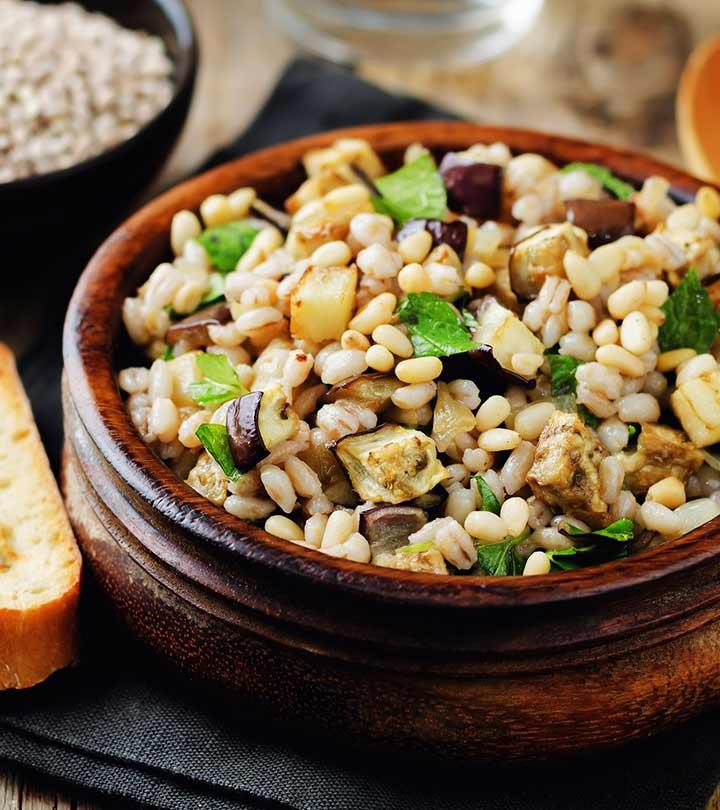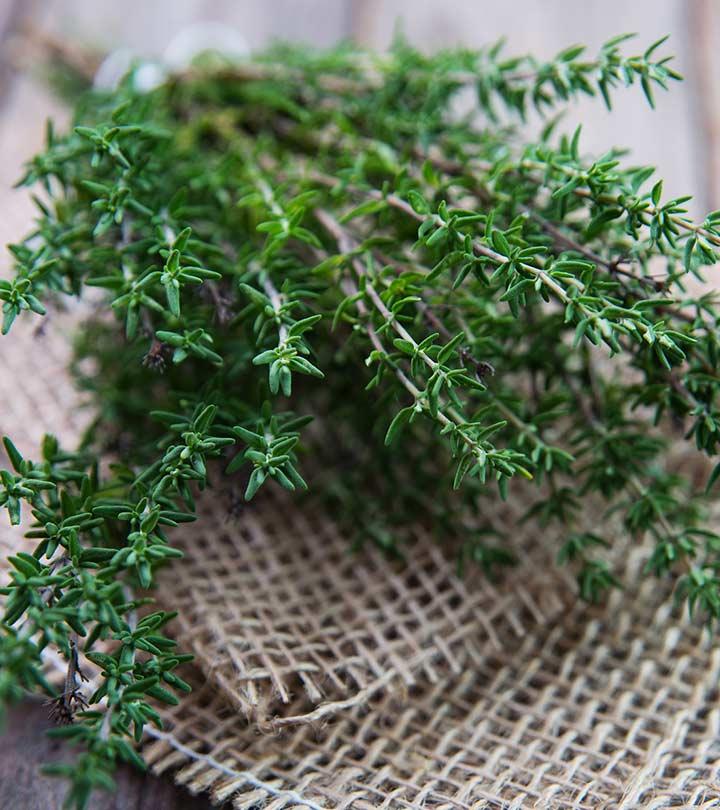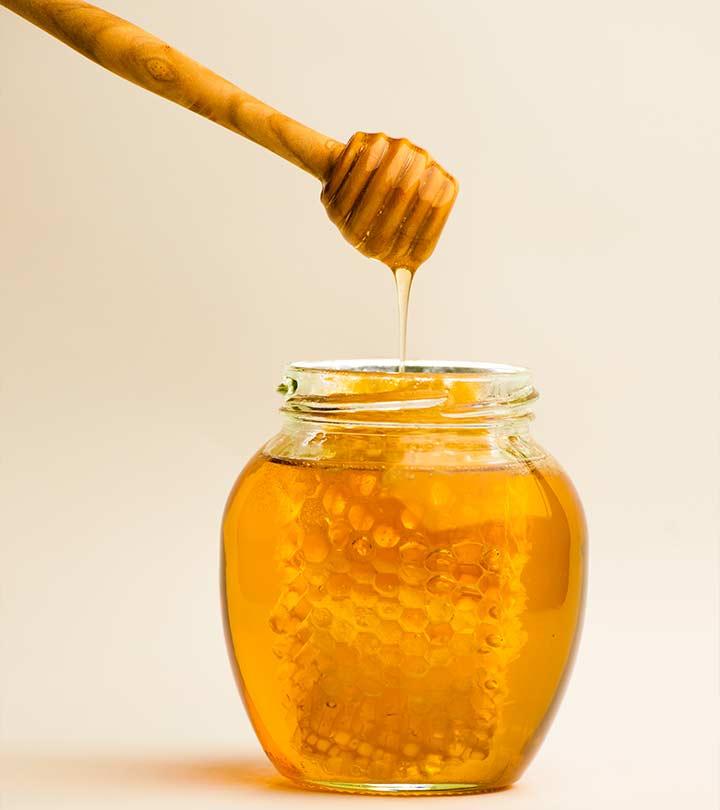13 Amazing Benefits Of Cayenne Pepper
Understand how this flavorful pepper can enhance your dishes and your physical health.

Image: Shutterstock
The many benefits of cayenne pepper might sway you to include it in your diet. This pepper originated in the Central and South Americas and was extensively used to spice many culinary preparations. It contains vitamins B6, C, E, potassium, manganese, and flavonoids. It benefits your body in many ways.
This article discusses the cayenne pepper’s health benefits, its nutritional profile, how to use it, recipes, and potential risks. Take a look.
 Know Your Ingredient: Cayenne Pepper
Know Your Ingredient: Cayenne PepperWhat Is It?
It is a moderately spicy, long red chili pepper rated between 30000 to 50000 scoville units.
What Are Its Benefits?
It has capsaicin known to have anti-inflammatory, analgesic, and antioxidant properties. It may aid digestive health, boost metabolism, promote weight loss, reduce pain, and offer anticancer properties.
Who Can Use It?
It can be consumed by most people in small amounts as a spice in food.
How Often?
It is generally safe to use cayenne pepper in small amounts as a part of a regular diet.
Caution
Avoid excessive consumption or use of cayenne pepper, as it may cause gastrointestinal discomfort, an upset stomach, and other health problems in some individuals.
In This Article
What Is Cayenne Pepper?
It is a moderately hot chili pepper that is used to flavor dishes. It is generally skinny and red, 10 to 25 cm long, and has a curved tip. Also known as chili peppers, African pepper, capsicum fruit, pimienta de cayena (in Spanish), and zanzibar pepper, cayenne pepper is a cultivar of Capsicum annuum (which is related jalapenos, bell peppers, and paprika).
Cayenne pepper contains a high amount of capsaicin (more of which we will talk about in a while) that is responsible for most of its benefits. Capsaicin is also responsible for the fruit’s fiery hot flavor. The pepper is rated between 30,000-50,000 on the Scoville heat units (a measurement scale for the ‘hotness’ of a chili pepper). And let us tell you that the rating is too damn high.
Now, let’s get to the history.
What Is The History Of Cayenne Pepper?
Cayenne pepper gets its name from the city of Cayenne in French Guiana. It is known to have originated in Central and South Americas, and was initially used as decoration – and this was much before people realized its importance as a culinary spice and medicine.
Christopher Columbus had discovered these fruits while traveling across the Caribbean. He brought them back to Europe as a substitute for black pepper (which was expensive back then). And today, cayenne pepper is cultivated across the world.
 Trivia
TriviaAll good. But is it that good?
Is Cayenne Pepper Good For You?
Capsaicin, and capsaicin only. Okay, at least most of the time. This compound in cayenne pepper that renders it its hot and spicy flavor is responsible for all that is good and glorious about cayenne pepper.
And then, there are other nutrients like vitamins A and C, which contribute to most of the ways this spice can do good to you.
The benefits of cayenne pepper are as decorated as its history. But before we get there, let’s check out what this spice is made of.
What Are The Nutrients In Cayenne Pepper?
| Principle | Nutrient Value | Percentage of RDA |
|---|---|---|
| Energy | 318 Kcal | 16% |
| Carbohydrates | 56.63 g | 43% |
| Protein | 12.01 g | 21% |
| Total Fat | 17.27 g | 57.56% |
| Cholesterol | 0 mg | 0% |
| Dietary Fiber | 27.2 g | 71% |
| Vitamins | ||
| Folates | 106 mcg | 26% |
| Niacin | 8.701 mg | 54% |
| Pyridoxine | 2.450 mg | 39% |
| Riboflavin | 0.919 | 71% |
| Thiamin | 0.328 mg | 27% |
| Vitamin A | 41610 IU | 1387% |
| Vitamin C | 76.4 mg | 127% |
| Vitamin E | 29.83 mg | 199% |
| Vitamin K | 80.3 mg | 67% |
| Electrolytes | ||
| Sodium | 30 mg | 2% |
| Potassium | 2014 mg | 43% |
| Minerals | ||
| Calcium | 148 mg | 15 % |
| Copper | 0.373 mg | 41% |
| Iron | 7.80 mg | 97.5% |
| Magnesium | 152 mg | 38% |
| Manganese | 2.00 mg | 87% |
| Phosphorus | 293 mg | 42% |
| Selenium | 8.8 mcg | 18% |
| Zinc | 2.48 mg | 22.5% |
| Phyto-nutrients | ||
| Carotene-ß | 21840 µg | — |
| Carotene-α | 0 µg | — |
| Cryptoxanthin-ß | 6252 µg | — |
| Lutein-zeaxanthin | 13157 µg | — |
Some of the important nutrients in cayenne pepper are vitamins C, B6, E, potassium, manganese, and flavonoids.
One teaspoon of cayenne pepper contains the following:
- 17 calories
- 2 milligrams of sodium
- 1 gram of fat
- 3 grams of carbohydrates
- 1 gram of sugar
- 1 gram of dietary fiber (6% of daily value)
- 1 gram of protein (1% of daily value)
- 2185 IU of vitamin A (44% of daily value)
- 6 milligrams of vitamin E (8% of daily value)
- 4 milligrams of vitamin C (7% of daily value)
- 1 milligrams of vitamin B6 (6% of daily value)
- 2 micrograms of vitamin K (5% of daily value)
- 1 milligrams of manganese (5% of daily value)
- 106 milligrams of potassium (3% of daily value)
Cayenne pepper contains no cholesterol.
There is a reason we must consume cayenne pepper. Check these benefits, and you will understand.
What Are The Benefits Of Cayenne Pepper?
The Capsaicin in cayenne pepper offers varied benefits. It boosts metabolism and heart health, and even clears congestion. Cayenne pepper is also known to relieve joint pains and other inflammatory conditions. The spice does good to skin and hair as well.
1. Boosts Metabolism
It’s all about metabolism, isn’t it? Studies show that cayenne pepper can boost metabolism and even suppress hunger (1). And for this, we must thank capsaicin (which is also called a thermogenic chemical). This compound is known to produce extra heat in our bodies and burn more fat and calories in the process. Research tells us that taking foods rich in capsaicin can increase our body’s metabolic rate by 20 percent (for up to 2 hours) (2).
A 2014 study found that people who took red peppers with every meal experienced fewer cravings and an enhanced feeling of fullness (3). This means that adding capsaicin to your diet can suppress your appetite. And this means cayenne pepper can help you in your weight loss mission too (4). Yay!
But hold on – we are only saying that adding cayenne pepper to your diet helps in certain ways. Please don’t torture yourself by filling your plate only with cayenne pepper!
2. Improves Digestive Health
It is said that the quality of your health depends on the quality of your digestive function. And with cayenne pepper, the latter (and the former) can definitely be taken care of.
Cayenne has the uncanny ability to boost heart action and circulation – thereby accelerating the digestive process. It also improves the stomach’s ability to defend infections and increase the production of digestive fluid. The pepper also smoothens the way important enzymes are delivered to the stomach (5). All of this enhances your digestive health.
Now, allow us to bust some myths. Capsaicin in cayenne pepper can help heal stomach ulcers. Of course, excessive consumption of spicy foods can sure lead to ulcers. But capsaicin is not the one to be blamed (6).
The pepper can also heal intestinal gas, stomach pain, diarrhea, and an upset stomach as well.
A blogger shared her mother’s experience with cayenne pepper and how it helped relax her ulcer. She notes her mother saying, “I feel this wonderful soothing warmth in my stomach. The pain has lessened (i).” The blogger shares how her mother has since then started incorporating cayenne pepper to a majority of her meals to curb the symptoms of ulcers.
[Read – Benefits of Amaranth]
3. Might Lower Blood Pressure
Some sources say that the capsaicin in cayenne pepper can lower your blood pressure overnight. Literally. Well, that might seem a little far-fetched (we don’t know, though), but what is true is that cayenne pepper can sure help heal your blood pressure woes.
The pepper opens up blood vessels, and this increases blood flow. As the rate of blood flowing through your system increases, your blood pressure naturally comes down (7).
Capsaicin also affects the sensory nerves that work with neuro-hormonal systems, and this lowers blood pressure. But then, cayenne pepper is not a replacement for your blood pressure medication. It is just a supplementation.
Simply mix one teaspoon of cayenne pepper with half a glass of lukewarm water and drink at night before bed.
4. Can Reduce Pain
Cayenne for pain – yes, that’s what we are talking about.
According to the University of Maryland Medical Center, capsaicin can reduce pain. The compound has powerful pain-relieving properties and works amazingly well when applied to the pain area. Here’s the science behind it – capsaicin reduces the amount of substance P (a chemical that delivers pain messages to the brain). As a result, you feel relief (8). This is why even most pain ointments have capsaicin as one of their ingredients.
Applying capsaicin to the skin is thought to reduce the concentration of substance P (a compound involved in pain transmission) and aid in pain relief. However, further clarity is warranted in this regard (9).
Cayenne works well for migraines too. Consuming it orally also reduces substance P and stops pain transmission. More importantly, it reduces platelet aggregation factor, also called PAF, which is what leads to migraines (by constricting the blood circulation in your head).
The pepper has a use for treating cramps as well. Capsaicin can reset the nerve-to-muscle communication by shocking the system into place. This can help relieve cramps. And some sources say that cayenne can relieve nerve pain – though we don’t have adequate research on this.
5. Can Prevent Cancer
In several studies, capsaicin has demonstrated the ability to induce apoptosis (death of cancer cells). In fact, it also arrests the ability of cancer cells to travel across the body.
One study talks about how capsaicin can help manage prostate cancer (10). And another American study talks about the anti-tumor activity of capsaicin. The compound can be beneficial in treating cancers of the lung, breast, colon, and prostate (11).
6. Protects The Heart
Given that cayenne improves the health of blood vessels and lowers blood pressure, it sure does good to the heart.
Cayenne pepper also prevents blood clots, making it effective in preventing heart attacks. The capsaicin clears the lipid deposits that narrow the arteries.
Studies show that cayenne is also effective in treating blood circulation problems, cardiac arrhythmia (irregular heartbeat), and palpitationsi A sensation that the heart is missing heartbeats and racing due to stress, variation in breathing, and alcohol consumption. .
As unbelievable as it might sound, one report suggests that cayenne pepper can stop a heart attack in just 30 seconds. In fact, the famed natural herbalist Dr. John Christopher is known to bring his patients out of heart attacks just by making them drink warm cayenne water (12).
Cayenne pepper is also beneficial in preventing heart disease associated with diabetes. And more interestingly, cayenne can help reduce plaques (and might lower cholesterol). It breaks down the fibrin networks that hold the plaque in place, thereby reducing the build-up.
7. Clears Congestion
If you have sinus congestion, cayenne pepper can help you out. The capsaicin in the pepper can thin the mucus and stimulate the sinuses. This ultimately aids air circulation, offering you relief. Taking foods containing cayenne pepper can help clear your congestion (13).
Capsaicin might also have a beneficial effect on rhinitis, a disease with symptoms like post nasal drip and nasal congestion. Though we still require more studies, the future looks promising in this regard of respiratory health benefits(14).
One of the best ways to use capsaicin is to get the related nasal spray from your nearest pharmacy. You might also take cayenne orally. You can add one teaspoon of the pepper to a cup of hot water and take it thrice a day. This dilates the blood vessels in your nose, stimulates secretions, and drains the sinuses.
Cayenne pepper can also help clear congestion caused by bronchitisi Inflammation of the lining of the airways leading to the lungs caused by long-term exposure to irritants or viruses. . It helps treat sinus infections, sore throats, and laryngitisi An inflammation or swelling of the vocal cords or voice box due to overuse, irritation, or infection. as well (you can use it as a gargle) (15). It might even help treat cold and flu and other related allergies.
8. Helps Detoxify
Detoxifying is like recharging your batteries for a new and invigorated you. And you can very well take the help of cayenne in this process.
One of the more popular detox diets consists of cayenne pepper and lemon. This diet was developed way back in 1940 by Stanley Burroughs, an alternative health practitioner. This diet works by lowering the calorie intake.
The detox diet lasts for 10 days, where you need to drink 12 glasses of a tonic that consists of water, lemon juice, maple syrup, and cayenne pepper. And by the way, no solid foods. You should be getting around 650 to 1,300 calories a day. Here, the weight loss happens very quickly, and you might lose close to 3 pounds a week. Most of that weight is water weight, though.
However, we don’t really recommend you follow this detox diet. Because we humans need a variety of nutrients to stay healthy, and this detox diet doesn’t offer you much. Though certain anecdotal reports suggest that this diet leaves one feeling healthier and energetic, there is no concrete research. In fact, your body’s natural detoxification system is enough to keep you healthy. This detox tonic can probably be a healthy alternative to sugary beverages, once in a while.
Or best, simply add cayenne pepper to your foods to aid detoxification.
9. Relieves Joint Pains
We already saw the pain-relieving effects of capsaicin. Studies have revealed that applying creams containing capsaicin on painful joints improved their condition.
As per the Arthritis Foundation, capsaicin (which also is one of the capsaicinoids present in cayenne pepper) has anti-inflammatory properties that can help relieve arthritis and joint pains (16). Topical capsaicin can also be effective for osteoarthritisi A type of arthritis that occurs when the tissue at the ends of the bones wears or breaks down over time. pain and fibromyalgiai A chronic syndrome that causes widespread muscle pain, tenderness, fatigue, and emotional and mental distress. (17).
10. Has Antimicrobial Properties
Cayenne pepper can prevent infection in the case of an injury, thanks to its antibacterial properties. It also possesses antifungal properties.
11. Improves Immunity
Though there are not many studies on this, the antioxidants in cayenne pepper can enhance one’s immunity. Eating this pepper is a natural remedy that also increases your body heat, and this is said to strengthen your immune system as well.
In a research study, the antioxidant activity of different peppers, including cayenne pepper, was determined based on their ferric-reducing antioxidant power (FRAP activity). Though less than the other varieties, cayenne pepper was found to be a potent antioxidant. Check out the graph below to find the results of the study.
FRAP Activity In Hot Peppers During Ripening
Source: Comparative Study on Polyphenols Content, Capsaicin and Antioxidant Activity of Different Hot Peppers Varieties (Capsicum annuum L.) Under Environmental Conditions of Thessaly Region, Greece.12. Can Heal Toothaches
Using cayenne pepper for toothache is an old-fashioned remedy, but one that works. The pepper acts as a counter-irritant and decreases the deeper tooth pain. It also increases local blood flow.
13. Improves Skin And Hair Health
Though we have limited research on this, some reports promote cayenne pepper for its skin and hair benefits. The capsaicin in the pepper can soothe skin redness (its anti-inflammatory properties) and also treats acne-induced skin discoloration, thus promoting skin health. But don’t use the pepper alone. Mix one spoon of the pepper with some cocoa powder and half a ripe avocado till you get a paste. Apply it to your face and rinse after 15 minutes.
The vitamin in cayenne pepper can improve hair health too. Mix some of the pepper with honey and apply to your scalp. Cover your hair with a cellophane cover. Wash after 30 minutes.
You can also add three eggs and olive oil to this mixture and follow the same procedure for stronger hair. This remedy can also add volume and shine to your hair.
 Quick Tip
Quick TipWe are done with the benefits. You definitely would want to pick a few peppers now, wouldn’t you? But how do you do that? And where do you store them?
How To Select And Store Cayenne Pepper
You need to select totally ripe cayenne peppers with a bright and even color. The ripe peppers are usually green or red.
You can store them in an airtight glass container, kept out of reach of direct sunlight.
Including cayenne pepper in your diet is simple.
How To Incorporate More Cayenne Pepper Into Your Diet
The pepper is quite versatile, so you can add it to a variety of dishes.
- You can add cayenne pepper to spice mixtures such as a curry tub.
- You can also spice up your marinades by adding cayenne pepper.
- A homemade dressing can also be made using the pepper. You can mix vinegar, oil, the pepper, and other seasonings as you desire.
There is no specific recommended daily intake of cayenne pepper. Pallini Winnifred, a Registered Dietitian Nutritionist, says, “The amount of cayenne pepper that is safe to consume will depend on a person’s age, gender, weight, and overall health. Some people may be more sensitive to the spicy taste of cayenne pepper than others, so it is important to start with small amounts and gradually increase the amount as tolerated.”
And yes, you sure can prepare a recipe using cayenne pepper.
Any Popular Cayenne Pepper Recipes?
1. Spicy Roasted Pumpkin Seeds
What You Need
- 1 cup of raw green pumpkin seeds
- ¼ teaspoon of cayenne pepper
- 1 teaspoon of chili powder
- ½ teaspoon of coarse salt
- 2 teaspoons of fresh lime juice
Directions
- Preheat the oven to 3500F.
- In a medium bowl, combine all the ingredients. Toss to coat. Spread on a rimmed baking seat.
- Bake until it is puffed or browned.
- Serve.
2. Cayenne Pepper Tea
What You Need
- Water
- Ginger
- Lemon, honey, and cayenne pepper, as required
Directions
- Add all the ingredients except water to a mug.
- Top with boiling water and steep for 5 minutes.
- Stir well and enjoy.
3. Homemade Cayenne Hot Sauce
What You Need
- 1 pound of cayenne peppers
- 5 cloves of garlic
- 3-4 tablespoons of white vinegar
- Half a teaspoon of onion powder
- Half a teaspoon of smoked paprika
- 2-3 tablespoons of canola oil
- Salt to taste
Directions
- Chop up the garlic cloves into fine bits.
- Heat up the oil in a saucepan over medium heat.
- Add in the chopped garlic, onion powder, and smoked paprika.
- Let it cook for about 3 minutes.
- Chop up the cayenne peppers.
- Add the chopped cayenne peppers, white vinegar, and salt to the saucepan.
- Bring all the ingredients to a boil.
- Switch to low heat and simmer for 20 minutes.
- Cool the mixture and transfer it to a food processor.
- Blend the sauce until it is smooth.
- Strain the sauce and store it in an air-tight jar.
The recipes are great. But wait –
Any Other Ways To Use Cayenne Pepper?
- If you’re using it for cooking, simply add a pinch or two of the pepper to your dishes to reap the benefits.
- Combine warm water, a teaspoon of honey or maple syrup, a squeeze of lemon juice, a pinch of cayenne pepper, and more if you’re using it as a detox drink.
- You can make a topical cream with cayenne pepper by combining it with a carrier oil. Applying this mixture to the affected area may help relieve pain.
- You can make cayenne pepper tea by mixing a cup of boiling water with half a teaspoon of cayenne pepper powder.
- You can place the jar of cayenne pepper on your dining table so that it can be sprinkled onto anything instantly when needed.
- Cayenne pepper, when added with some lemon juice, can render the most delectable and lip-smacking flavor to any bitter or bland dish.
- It also works wonders when added to traditional hot cocoa.
- One can also prepare some cayenne pepper sauce to apply to bread slices and add to soups.
Alright. But do you know where to procure cayenne pepper from?
Where To Buy Cayenne Pepper?
You can buy cayenne pepper from your nearest supermarket store or online. You may also go for cayenne pepper pills after checking with your doctor.
Any Fun Facts About Cayenne Pepper?
- Cayenne pepper has been a part of the Native American cuisine for at least 9,000 years.
- It is available all year round.
- The cayenne pepper plant grows to about 2 to 4 feet tall.
- Immature cayenne pepper is green and is also called hot pepper.
- Botanically speaking, the pepper is a berry.
- It is also known as guinea spice, aleva or bird pepper, red pepper, and cow horn pepper.
- Most of the pepper you see in the market is ground cayenne.
Additional Tips For Using Cayenne Pepper Safely
- Start by using a small amount of cayenne pepper and see how your body responds.
- You can gradually increase the amount of cayenne pepper you use if you observe no adverse effects.
- Make sure to properly wash your hands after you handle cayenne pepper.
- Avoid using cayenne pepper on exposed wounds or in your eyes.
- If you experience any negative effects after using cayenne pepper, like irritation, immediately stop use and consult your physician.
This hot spice does have a dark side. Let’s check that out.
Any Side Effects Of Cayenne Pepper?
- Irritation
The capsaicin in cayenne pepper can cause irritation in certain people (18). This can include skin irritation, irritation of the eyes, stomach, throat, and nose.
Also, never apply the pepper to broken or injured skin.
- Liver Or Kidney Damage
Taking excess of cayenne pepper orally can lead to kidney or liver damage. However, limited data is available in this regard.
- Issues With Pregnancy And Breastfeeding
Using cayenne pepper on the skin is safe. But taking it orally can be harmful. Avoid use.
- Effects In Children
Children under the age of 2 years must stay away from cayenne pepper.
- Increased Risk Of Bleeding
The capsaicin in cayenne pepper might increase bleeding during and after surgery. Also, cayenne pepper is not recommended to be consumed by those on blood thinners or with bleeding disorders. Hence, avoid using it at least two weeks before your scheduled surgery.
In addition, some believe that cayenne pepper may cause heartburn and an upset stomach. However, limited data is available in this regard.
Infographic: Top 4 Reasons To Have Cayenne Pepper
Although you may be wary of cayenne pepper because of its hot nature, its different health benefits may help you to put your concerns to rest for good. This pepper is packed with capsaicin that offers a range of advantages to your body, and especially to your gut.
Check out the infographic below to learn more about the benefits of cayenne pepper for your body. Illustration: StyleCraze Design Team
The capsaicin in cayenne pepper is responsible for the health benefits that comes with it. Apart from being known for its pain-relieving properties, it is used in cooking as it may also boost metabolism, improve digestion, lower blood pressure, reduce cancer risk, and enhance skin and hair health. However, cayenne pepper may also cause irritation in some, and lead to kidney or liver damage if consumed in excess. An increased risk of bleeding during and after surgery is another adverse effect to be wary about. Hence, include it in moderation to reap its benefits safely.
Frequently Asked Questions
Is it good to take cayenne pepper at night?
It is generally safe to consume cayenne pepper at any time of day, including at night. Winnifred adds, “However, it is important to be mindful of the overall amount of cayenne pepper that you consume, as excessive intake may cause gastrointestinal discomfort or other side effects.”
Can I use capsaicin for my eyes?
You can put a little bit (in case the skin around your eyes has inflamed as cayenne pepper has anti-inflammatory properties), but your eyes would burn very badly. Hence, we suggest you don’t.
Does taking cayenne pepper make you smell of garlic?
Nope.
Is there a substitute for cayenne pepper?
If cayenne pepper feels too spicy, you can go with capsicum. It also contains capsaicin.
I have started taking cayenne pepper for blood pressure, but it has actually increased. Why does this happen?
That is a common experience. And this is what Dr. John Christopher has to say about this: “This herb is a great food for the circulatory system in that it feeds the necessary elements into the cell structure of the arteries, veins and capillaries so that these regain the elasticity of youth again and the blood pressure adjusts itself to normal. When the venous structure becomes loaded with sticky mucus, the blood has a harder time circulating; therefore, higher pressure forces the liquid through. Cayenne regulates the flow of blood from the head to the feet so that it is equalized; it influences the heart immediately, then gradually extends its effects to the arteries, capillaries, and nerves.”
Is cayenne pepper good for your kidneys?
Possibly. The capsaicin and potassium in cayenne pepper may maintain electrolyte balance and potentially help reduce kidney stone risk. Also, as per animal studies, cayenne pepper might benefit those with chronic kidney disease by functioning as a diuretic (19). However, more human studies are needed in this regard.
Is cayenne pepper good for your liver?
Yes, capsaicin has hepatoprotective properties that reduce the risk of liver inflammation. Animal studies show that it may also help reduce the risk of alcohol-induced liver injury (20).
Can cayenne pepper clean your arteries?
Cayenne pepper improves circulation by promoting cholesterol export and reducing plaque buildup in the arteries (21).
Key Takeaways
- Capsaicin in cayenne pepper can help boost metabolism as it helps burn fat and calories by producing extra heat in the body.
- This pepper may help stimulate the sinuses and offer relief during sinus congestion.
- Cayenne pepper can be added to spice mixtures and marinades to enrich the flavor.
- Always use it in moderate amounts as excess cayenne pepper can lead to severe liver damage.

Image: Stable Diffusion/StyleCraze Design Team
Learn about the amazing health benefits of cayenne pepper! Capsaicin, the active ingredient, can help reduce inflammation, improve digestion, and even boost metabolism. Watch this video for more information!
Personal Experience: Source
StyleCraze's articles are interwoven with authentic personal narratives that provide depth and resonance to our content. Below are the sources of the personal accounts referenced in this article.
i. Cayenne Pepperhttps://queenofsiennaskitchenjournal.wordpress.com/2013/05/14/cayenne-pepper/
References
Articles on StyleCraze are backed by verified information from peer-reviewed and academic research papers, reputed organizations, research institutions, and medical associations to ensure accuracy and relevance. Read our editorial policy to learn more.
- “Effects of capsaicin…”. University of Copenhagen, Denmark.
- “Effects of dihydrocapsiate on adaptive and diet-induced thermogenesis with a high protein very low calorie diet:”.a randomized control trial
- “Capsaicin increases sensation to fullness…”. Maastricht University, The Netherlands.
- “The effects of hedonically acceptable…”. Purdue University, USA.
- “Phytochemistry and gastrointestinal benefits…”. US National Library of Medicine.
- “Capsaicin and gastric ulcers”. CFTRI, Mysore, India.
- “Physiology, Vasodilation” US National Library of Medicine.
- “Cayenne”. University of Maryland Medical Center.
- “This is your brain on capsaicin”. Helix.
- “Capsaicin, a component of red peppers, inhibits…”. University of California, USA.
- “Bioavailability of capsaicin and its…”. Marshall University, Huntington, USA.
- “Astounding cayenne”.
- “A guide to natural ways to alleviate energy…”. Explore, Integrative Medicine.
- “Capsaicin for rhinitis”. Academic Medical Center, Amsterdam, The Netherlands.
- “Cayenne”. University of Rochester Medical Center.
- “Best spices for arthritis”. Arthritis Foundation.
- “Systematic review of topical capsaicin for the treatment of chronic pain” US National Library of Medicine.
- “Enhanced Transdermal Delivery of Concentrated Capsaicin from Chili Extract-Loaded Lipid Nanoparticles with Reduced Skin Irritation”, US National Library of Medicine.
- Effects of Chronic Administration of Capsaicin on Biomarkers of Kidney Injury in Male Wistar Rats with Experimental Diabetes, US National Library of Medicine.
https://www.ncbi.nlm.nih.gov/pmc/articles/PMC6337195/ - Capsaicin, the pungent principle of peppers, ameliorates alcohol-induced acute liver injury in mice via modulation of matrix metalloproteinases, US National Library of Medicine.
https://pubmed.ncbi.nlm.nih.gov/29053935/ - Capsaicin may have important potential for promoting vascular and metabolic health, US National Library of Medicine.
https://www.ncbi.nlm.nih.gov/pmc/articles/PMC4477151/
Read full bio of Merlin Annie Raj
- Pallini Winnifred, RDN, serves over 200 clients in the NYC area. She has a bachelor's degree in Nutrition Science from Stony Brook University and two years of experience in nutrition counseling.
 Pallini Winnifred, RDN, serves over 200 clients in the NYC area. She has a bachelor's degree in Nutrition Science from Stony Brook University and two years of experience in nutrition counseling.
Pallini Winnifred, RDN, serves over 200 clients in the NYC area. She has a bachelor's degree in Nutrition Science from Stony Brook University and two years of experience in nutrition counseling.
Read full bio of Arshiya Syeda
Read full bio of Aparna Mallampalli








